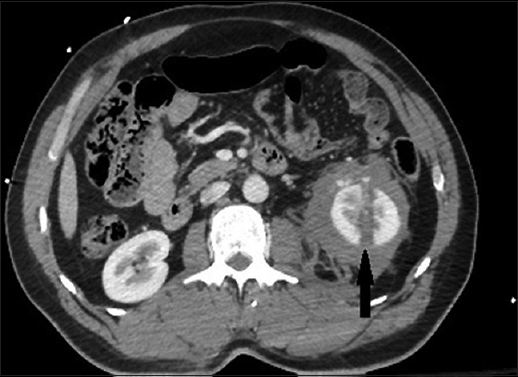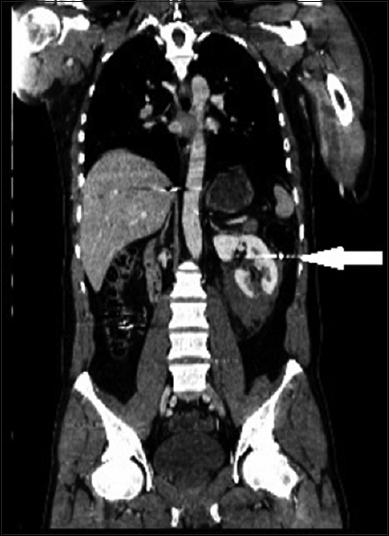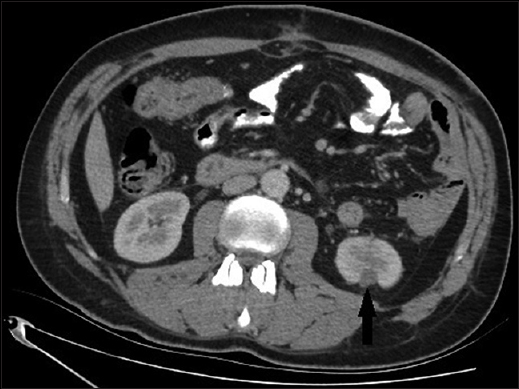Translate this page into:
Blast effect of shotgun injury in kidney mimicking avulsion of the low pole
*For correspondence: dr.selahattin@gmail.com
-
Received: ,
This is an open access article distributed under the terms of the Creative Commons Attribution-NonCommercial-ShareAlike 3.0 License, which allows others to remix, tweak, and build upon the work non-commercially, as long as the author is credited and the new creations are licensed under the identical terms.
This article was originally published by Medknow Publications & Media Pvt Ltd and was migrated to Scientific Scholar after the change of Publisher.
A 39 yr old man presented to the Emergency department, of Çorum Training and Research Hospital, Hitit University, Çorum, Turkey, in April 2016, with multiple gunshot injuries (GSIs). Computed tomography (CT) showed multiple pellets of shotgun in the abdomen and the left kidney (Fig. 1 and 2) Physical examination of the patient was normal and abdominal exploration was planned. Laparotomy was done and Gerota’ fascia was opened. The kidney was normal and only showed blast effect of gunshot on the posterior surface. After one month, computed tomography revealed normal left kidney with posterior defect (Fig. 3).

- Computed tomography image of the left kidney after the shotgun injury. Arrow shows the avulsion.

- The coronal images of the kidney. Arrow shows the bullet.

- Computed tomography image of the injured kidney (arrow) after one month from the trauma.
GSIs are the leading cause of death among young males next only to motor vehicle accidents, and bleeding and urinary extravasation from the collecting system are the two major problems in kidney injuries. If the patient has stable haemodynamic parameters after gunshot kidney injury, conservative management is an alternative method for these patients.





